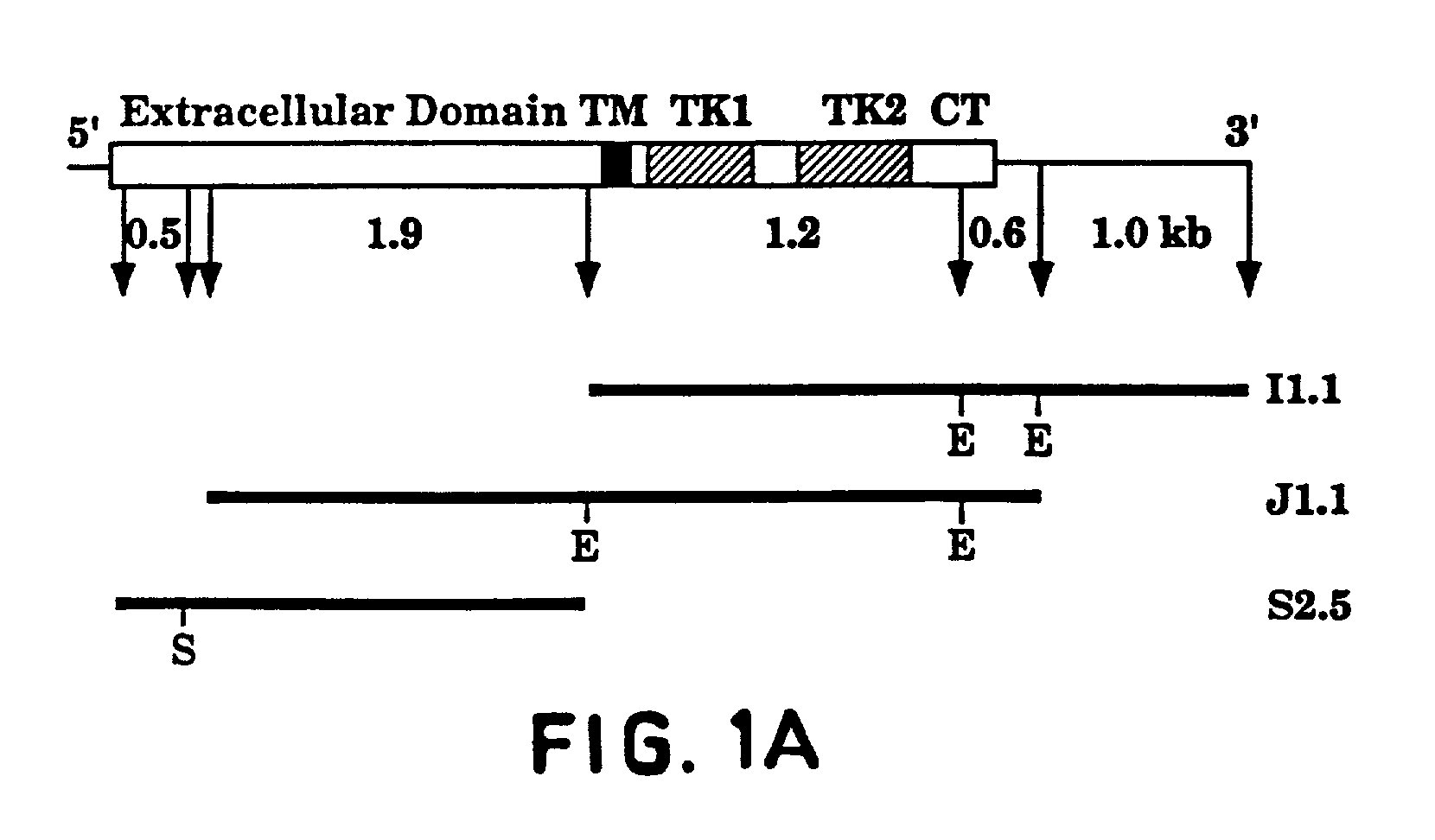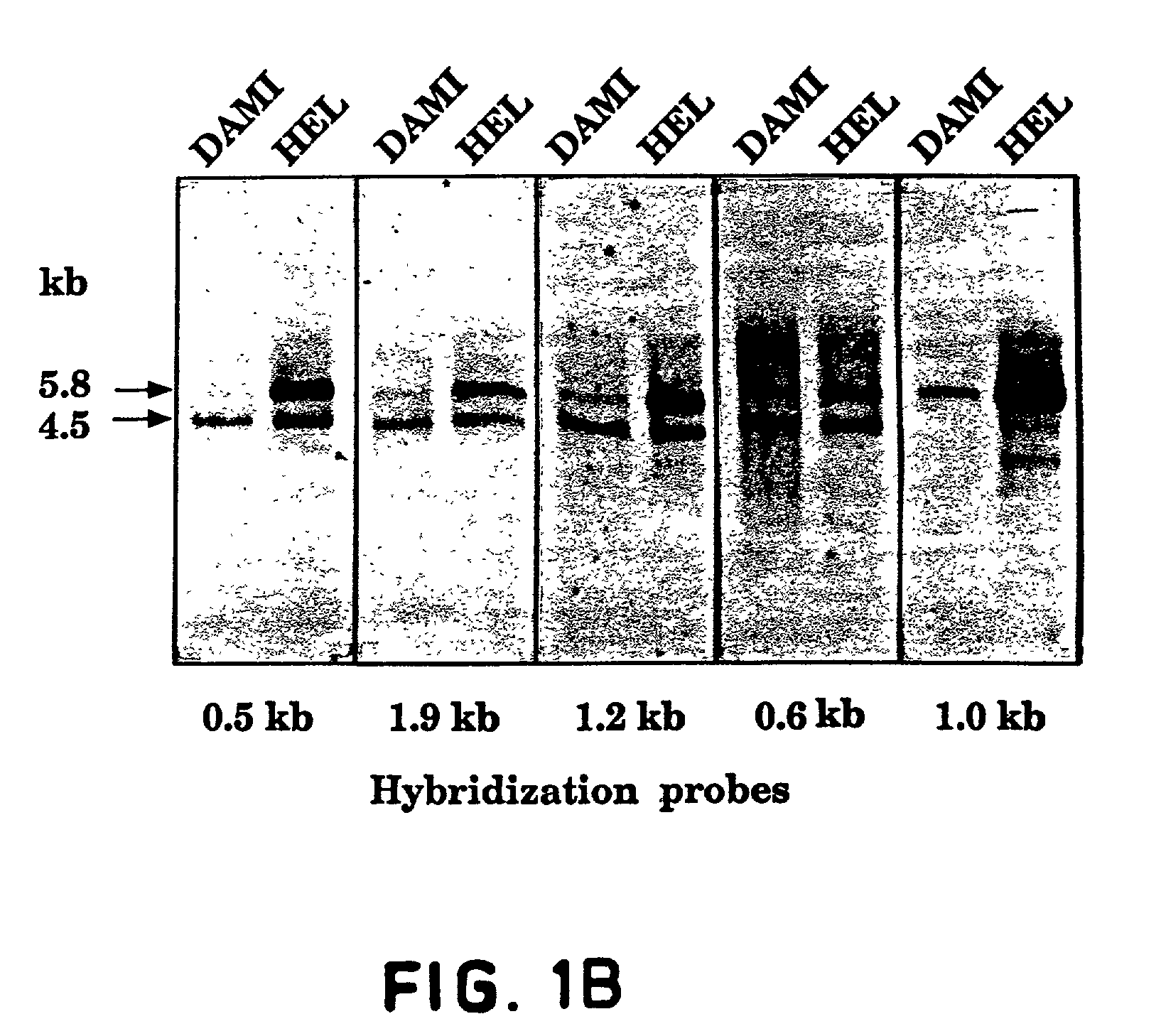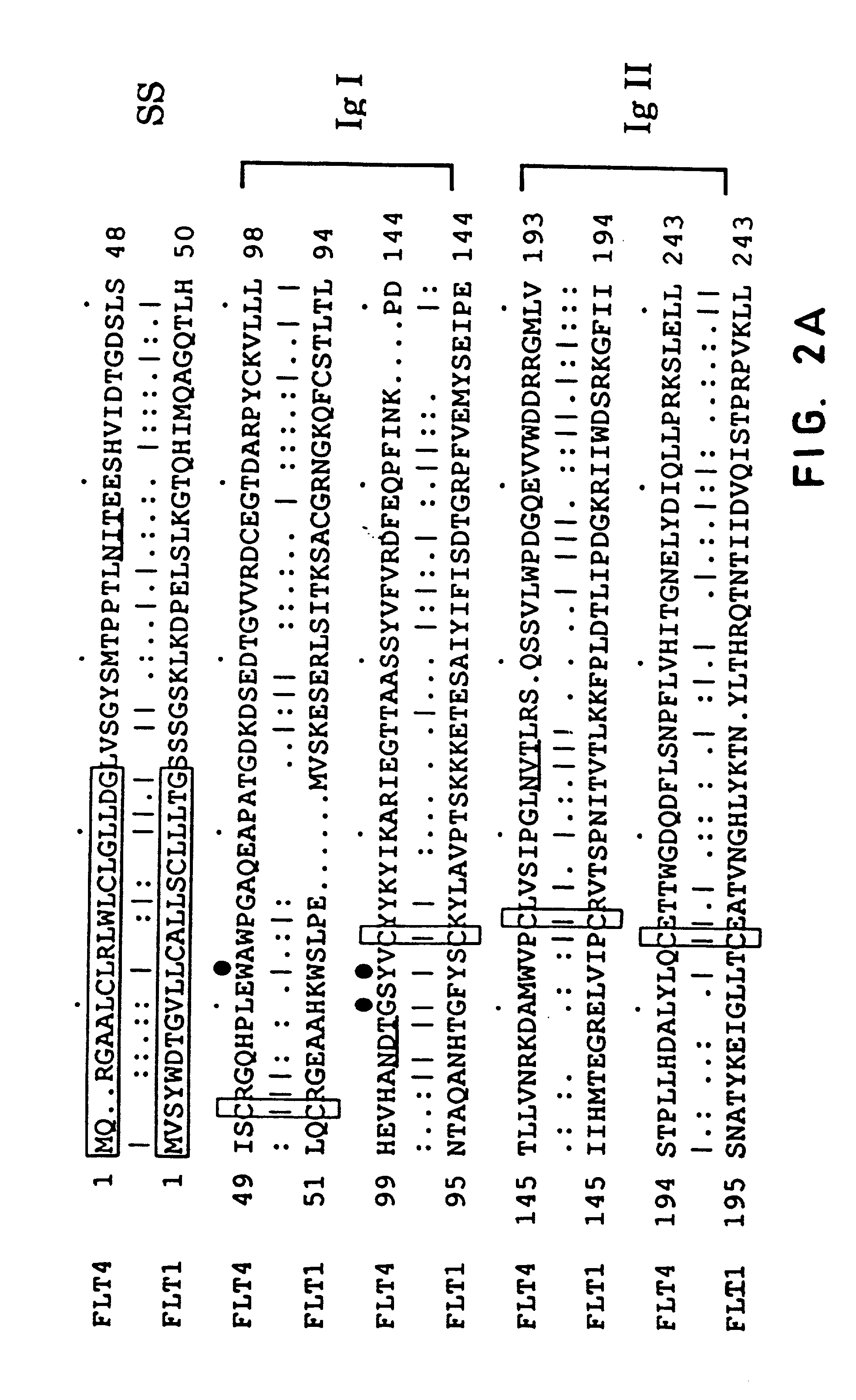FLT4 (VEGFR-3) as a target for tumor imaging and anti-tumor therapy
- Summary
- Abstract
- Description
- Claims
- Application Information
AI Technical Summary
Benefits of technology
Problems solved by technology
Method used
Image
Examples
example 1
Isolation and Characterization of cDNA Clones Encoding Flt4
Materials and Methods
[0149]An oligo-dT primed human HEL cell cDNA library in bacteriophage lambda gt11 [A kind gift from Dr. Mortimer Poncz, Childrens Hospital of Philadelphia, Pa.; Poncz et al., Blood, 69: 219–223 (1987)] was screened with a cDNA fragment PCR-amplified from the same library [Aprelikova et al., Cancer Res., 52: 746–748 (1992)]. Positive plaques were identified and purified as described [Sambrook et al., Molecular Cloning—A Laboratory Manual, Cold Spring Harbor Laboratory Press, (1989)]. cDNA inserts of bacteriophage lambda were isolated as EcoRI fragments and subcloned into a GEM3Zf(+) plasmid (Promega). The entire Flt4 protein coding region was isolated. Three overlapping clones isolated from the HEL-library (as illustrated in FIG. 1) were sequenced using the dideoxy chain termination method with oligonucleotide primers designed according to the sequences obtained. All portions of the cDNAs were sequenced o...
example 2
Preparation of an Anti-Flt4 Antisera
[0155]A 657 base pair EcoRI fragment encoding the predicted C-terminus of Flt4 short form was cloned in-frame with the glutathione-S-transferase coding region in the pGEX-1λT bacterial expression vector (Pharmacia) to produce a GST-Flt4 fusion protein in E. coli. The resulting fusion protein was produced in bacteria and partially purified by glutathione affinity chromatography according to the manufacturer's instructions. This protein was used in immunization of rabbits in order to produce polyclonal antibodies against Flt4. Antisera were used after the third booster immunization.
example 3
Expression of Flt4 in COS Cells
Materials and Methods
[0156]The full-length Flt4 protein coding sequence (combined from three clones, FIG. 1) was inserted into the HindIII-BamHI site of SVpoly mammalian expression vector [Stacey et al., Nucleic Acids Res., 18: 2829 (1990)] construct SV14-2. The expression vectors (SV-FLT4 short and SV-FLT4 long, containing the respective forms of Flt4 cDNA) were introduced into COS cells by DEAE-dextran transfection method [McCutchan et al., J. Natl. Cancer Inst., 41: 351–357 (1968)]. Two days after transfection, the cells were washed with phosphate-buffered saline (PBS) and scraped into immunoprecipitation buffer (10 mM Tris pH 7.5, 50 mM NaCl, 0.5% sodium deoxycholate, 0.5% Nonidet P40, 0.1% SDS, 0.1 TIU / ml Aprotinin). The lysates were sonicated, centrifuged for 15′ at 10,000×g and incubated overnight on ice with 3 ml of the antisera. Protein A sepharose (Pharmacia) was added and the incubation was continued for 30′ with rotation. The precipitates w...
PUM
| Property | Measurement | Unit |
|---|---|---|
| Fraction | aaaaa | aaaaa |
| Fraction | aaaaa | aaaaa |
| Fraction | aaaaa | aaaaa |
Abstract
Description
Claims
Application Information
 Login to View More
Login to View More - R&D
- Intellectual Property
- Life Sciences
- Materials
- Tech Scout
- Unparalleled Data Quality
- Higher Quality Content
- 60% Fewer Hallucinations
Browse by: Latest US Patents, China's latest patents, Technical Efficacy Thesaurus, Application Domain, Technology Topic, Popular Technical Reports.
© 2025 PatSnap. All rights reserved.Legal|Privacy policy|Modern Slavery Act Transparency Statement|Sitemap|About US| Contact US: help@patsnap.com



